A Hawkeye Fan's Gift Honors Iowa's Girls Basketball History
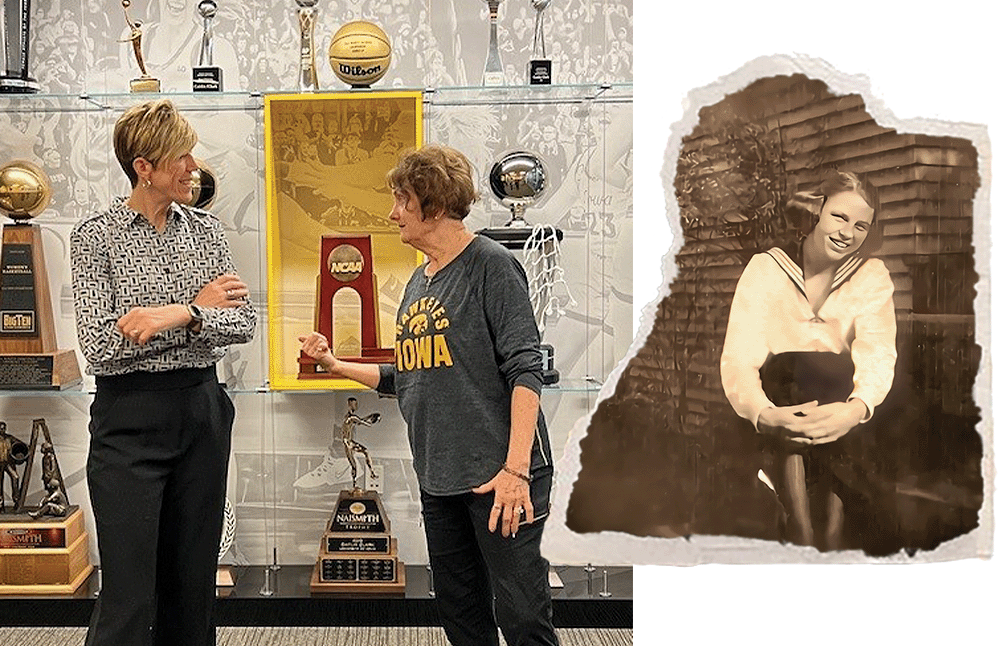 PHOTOS COURTESY JAN JENSEN & SHERYL STOLL
LEFT PHOTO: Coach Jan Jensen swaps basketball history stories with donor Sheryl Stoll; RIGHT PHOTO: Dorcas Anderson, Jensen's grandmother and
one of the pioneers of Iowa high school girls basketball.
PHOTOS COURTESY JAN JENSEN & SHERYL STOLL
LEFT PHOTO: Coach Jan Jensen swaps basketball history stories with donor Sheryl Stoll; RIGHT PHOTO: Dorcas Anderson, Jensen's grandmother and
one of the pioneers of Iowa high school girls basketball.
Jan Jensen remembers admiring a trophy her grandmother Dorcas Anderson displayed in her china cabinet.
“I always looked at her most valuable player trophy and knew I wanted to get one too,” says Jensen, Iowa’s P. Sue Beckwith, MD, Head Women’s Basketball Coach. “She was an amazing basketball player, person, and grandmother.”
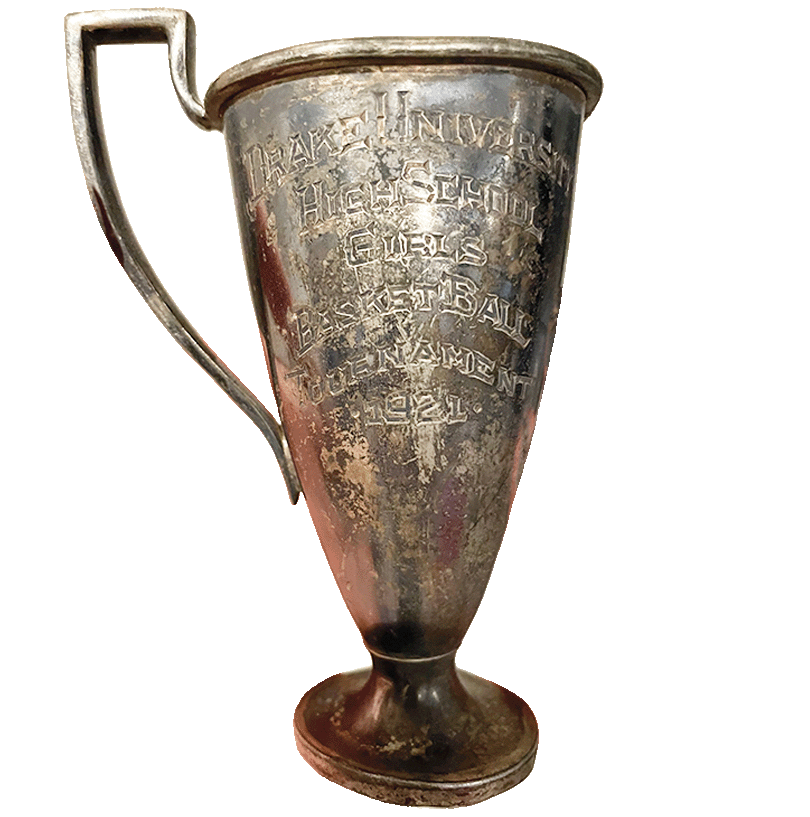 Click to enlarge
Click to enlarge
Anderson played center for her 6-on-6 high school basketball team in Audubon, Iowa—scoring 89 of its 122 points en route to the 1921 state championship. She scored so many points that her high school nickname was Lottie.
Until 1993, Iowa girls played various forms of 6-on-6 basketball. According to author Janice Beran and her book, From Six-on-Six to Full Court Press, many teams in the 1920s and 1930s used two forwards, two guards, a jump center, and a side center. Over time, the game shifted to three players on offense and defense—with participants allowed two dribbles before having to pass or shoot.
Much like her grandmother, Jensen was a 6-on-6 high school scoring star at Elk Horn-Kimballton High School—leading the state her senior year with an average of 66 points per game. For Jensen and so many young women, it was an exciting brand of basketball that garnered much attention around the state.
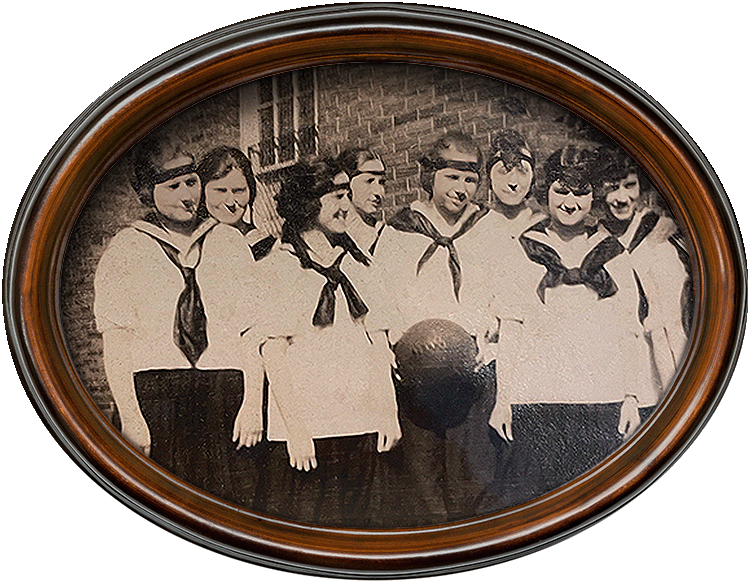 Click to enlarge
Click to enlarge
“It was just so much fun because of the community support—every night we played in front of packed houses,” says Jensen. “Iowa has long shown its support for girls and women’s sports, and we stand on the shoulders of those who came before us. My grandmother was one of the first to play the sport in Iowa, and she would certainly be proud that her passion and hard work has produced such an exciting game.”
While Anderson and Jensen were fortunate to compete at the state tournament for their communities, not every Iowa girl had the same opportunities.
Heartbreak Off the Court
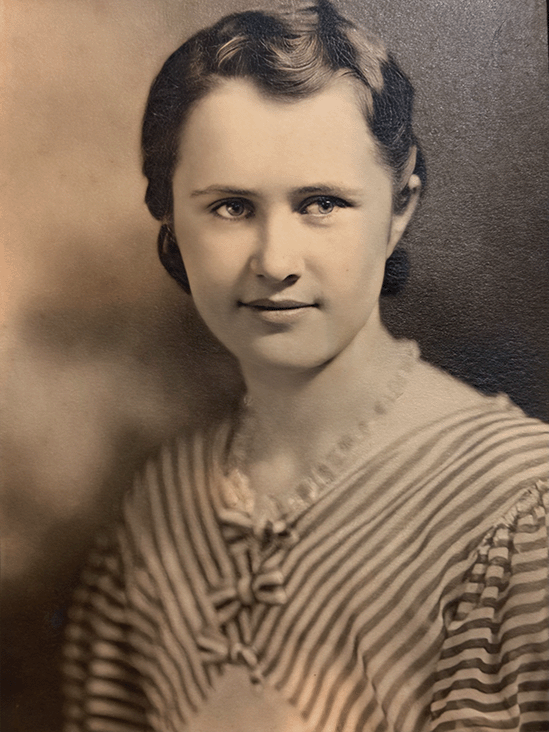 Maxine Hand Atkinson
Maxine Hand Atkinson
Growing up on a farm near Collins, Iowa, Maxine Hand Atkinson could be frequently found playing basketball with her brothers and cousins.
“She was a competitor, and that’s why she loved basketball so much,” says her daughter Sheryl Stoll (80JD). “Basketball was one of the few sports her high school offered young girls.”In the early 1930s, Atkinson’s team was exceptionally good and was looking forward to showcasing their skills at the state tournament. Stoll’s mother, the jump center, was excited. There was just one problem—the school superintendent decided they could not play in the postseason.
“The superintendent said it would be too hard on the girls and would not allow the team to compete,” says Stoll. “My mother said many of the parents protested and tried to talk to the superintendent. He was adamant that they could not go. It broke all their hearts.”
It was an experience that stuck with Stoll’s mother until her death in 2010 at age 94.
 PHOTO COURTESY SHERYL STOLL
Atkinson’s Collins, Iowa, high school basketball team in 1930. Atkinson is pictured in the middle row, third from the left.
PHOTO COURTESY SHERYL STOLL
Atkinson’s Collins, Iowa, high school basketball team in 1930. Atkinson is pictured in the middle row, third from the left.
“When she would tell the story about her team, you could tell that she never got over it,” says Stoll. “They might have lost in the first game of the state tournament, but they never had the opportunity to see what they could do. I can’t fix what happened, but I wanted to bring light to the barriers that some of the early girls teams faced.”
A Celebration of Women in Sport
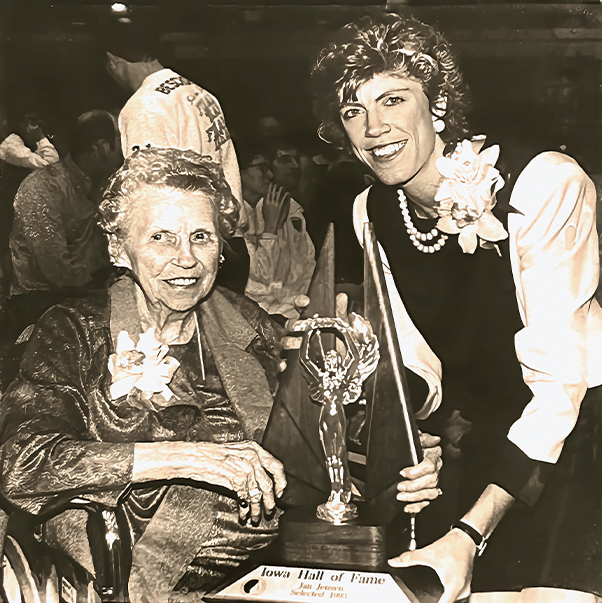 Click to enlarge
Click to enlarge
In 2024, Stoll toured Carver-Hawkeye Arena and met Jensen. It served as an epiphany.
“We talked briefly about her grandmother and my mother—and it made me want to honor these pioneering women who were some of the first to play high school basketball,” says Stoll.
That’s why she made a generous gift to create the Iowa High School Girls Basketball Pioneer Fund, which will recognize the state’s rich girls high school basketball history and support some of the pressing needs of Iowa women’s basketball. Stoll’s hope is to unearth more stories, much like her mother’s and Jensen’s grandmother’s, from the early 1900s.
“What Sheryl has done is amazing,” says Jensen. “So much gratitude. It’s awesome that she’s honoring her mother in this way. I’m so thankful that our program has so many supporters—those who endow special funds like Sheryl, create scholarships, support Carver-Hawkeye Arena renovations, and support revenue share through the Women’s Basketball Flight Fund. It takes all of us.”
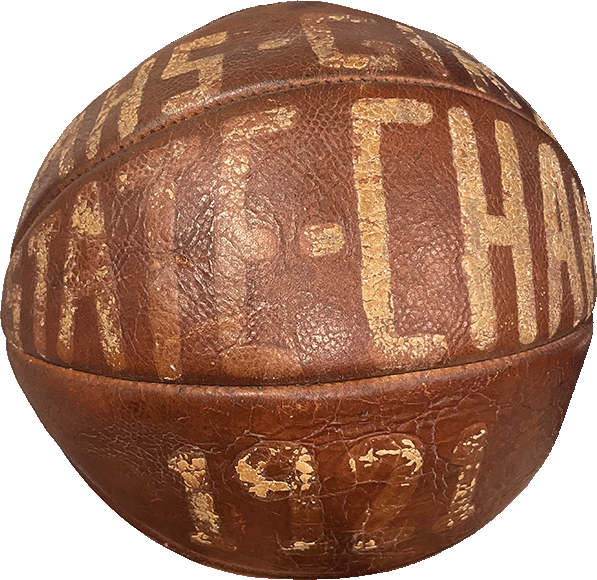 Click to enlarge
Click to enlarge
Stoll is happy to pay it forward, support a team she enjoys cheering on, and celebrate her mother and others who were Iowa high school girls basketball pioneers.
“I know she would have been proud that Iowa has put women’s basketball—a sport that she played and loved—on a bigger stage,” says Stoll. “She would have loved to see how far the sport has come since her time on the court.”
